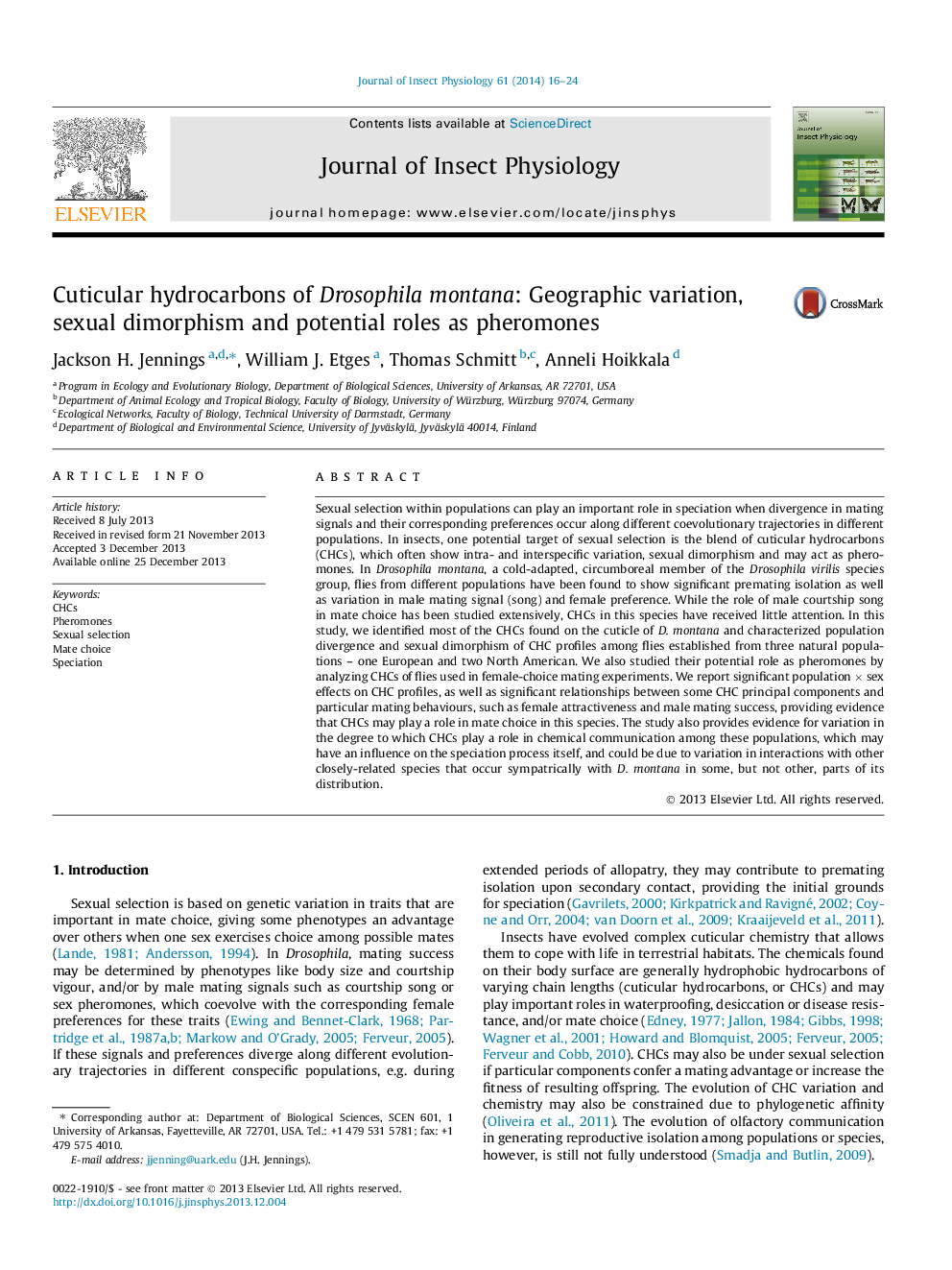| Article ID | Journal | Published Year | Pages | File Type |
|---|---|---|---|---|
| 5921676 | Journal of Insect Physiology | 2014 | 9 Pages |
â¢Cuticular hydrocarbons (CHCs) of Drosophila montana are identified and quantified.â¢We report significant population and sex differences in CHCs using three allopatric populations.â¢Mating tests showed that CHCs may be involved in female attractiveness and male mating success.â¢These include 7-pentacosene, Î-nonacosadiene, 2-methyloctacosane and 2-methyltriacontane.
Sexual selection within populations can play an important role in speciation when divergence in mating signals and their corresponding preferences occur along different coevolutionary trajectories in different populations. In insects, one potential target of sexual selection is the blend of cuticular hydrocarbons (CHCs), which often show intra- and interspecific variation, sexual dimorphism and may act as pheromones. In Drosophila montana, a cold-adapted, circumboreal member of the Drosophila virilis species group, flies from different populations have been found to show significant premating isolation as well as variation in male mating signal (song) and female preference. While the role of male courtship song in mate choice has been studied extensively, CHCs in this species have received little attention. In this study, we identified most of the CHCs found on the cuticle of D. montana and characterized population divergence and sexual dimorphism of CHC profiles among flies established from three natural populations - one European and two North American. We also studied their potential role as pheromones by analyzing CHCs of flies used in female-choice mating experiments. We report significant population Ã sex effects on CHC profiles, as well as significant relationships between some CHC principal components and particular mating behaviours, such as female attractiveness and male mating success, providing evidence that CHCs may play a role in mate choice in this species. The study also provides evidence for variation in the degree to which CHCs play a role in chemical communication among these populations, which may have an influence on the speciation process itself, and could be due to variation in interactions with other closely-related species that occur sympatrically with D. montana in some, but not other, parts of its distribution.
Graphical abstractDownload full-size image
